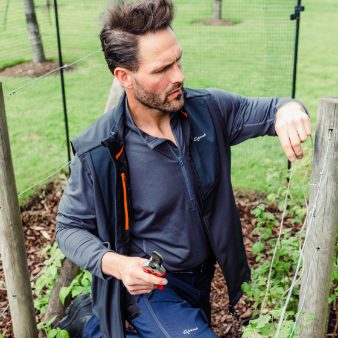Gardeners' notes - what to do in November

How to overwinter dahlias
Probably one of the most common questions we get asked. The traditional advice has always been to cut back the foliage and dig up the tubers. All the soil is washed off with a hose, the tubers dried, and often dowsed in sulphur. We’ve found that this method results in more losses than the other approaches we’ve employed - mice can eat the tubers, frost can damage even the most well wrapped dahlia, and finally rot can set in, leading to a slimy discovery in spring.
There is another alternative that works well if you have the space. Dig up the tubers retaining all the soil around them. Stack them with soil still intact around the rootball on shelving in a cool but frost-proof building. (We used to have the luxury of an old stable with shelving adapted for storing apples). The rootball of soil will gradually dry-out over winter but naturally occurring antibiotics within the soil prevent any disease or rot from setting in. In the spring the whole lot is planted back into the borders. If early shoots appear while still on the shelving, these can be used as basal cuttings to produce more plants for the borders.
The third option that sometimes raises an eyebrow but is quickly adopted by those with eye for efficiency is to leave the tubers in the ground. We’ve been doing it for nearly ten years now and whatever the conditions, no matter how wet, no matter how low the temperatures, they’ve returned again the following year. Our only contribution to their survival is an extra layer of mulch to offer some protection from the elements.
Planting garlic
Despite winter being just around the corner, now is the perfect time to plant garlic. The developing plants need cold and a prolonged growing period to ensure that the individual cloves form within the bulb. Garlic planted later often results in a single marble shaped clove that hasn’t segmented. Purchase your cloves from a reputable supplier, or split a supermarket bulb (It’s cheaper and often just as productive, and it’s always fun to experiment). Plant them about 3cm deep and 15 cm apart. Within just a few weeks you should see green shoots starting to appear. Resistant to the coldest of winters the plants will continue to grow and be ready for cropping in may or June.







